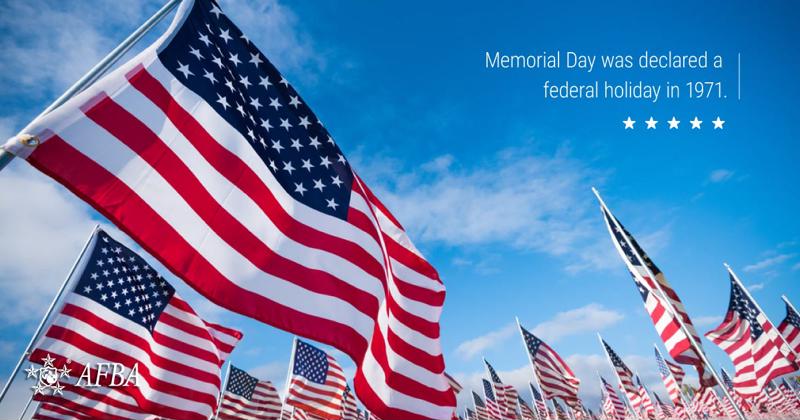When people hear the words “Memorial Day,” they often think of sales and three-day weekends. While the holiday is a nice way to welcome warmer weather, it’s important not to forget the day’s history and meaning.
Memorial Day was first celebrated after the end of the Civil War, which concluded May 5, 1868. It was started by an organization of Union veterans known as the Grand Army of the Republic. Maj. Gen. John A. Logan, the head of this organization, declared what was then known as Decoration Day would be observed May 30. Celebrations involved laying flowers on the graves of dead soldiers.
There are two possible reasons for the choice of date. The U.S. Department of Veterans Affairs suggested that May 30 was a day when flowers were likely blooming across the nation, so everyone could participate. Meanwhile, the History Channel noted that May 30 is one of the rare spring days that wasn’t the anniversary of a major Civil War battle.
 Memorial Day is celebrated on the last Monday in May.
Memorial Day is celebrated on the last Monday in May.Recognizing fallen soldiers before Memorial Day
Regardless of the true reason, it’s likely that Maj. Gen. Logan got the idea for such a holiday from other groups. One of the first such commemorations was organized by recently freed slaves as a way of thanking Union soldiers.
Near the end of the war, thousands of captured Union servicemembers were transferred to camps in Charleston, South Carolina. Conditions at one of the camps were so bad that over 250 prisoners died from disease or exposure, and their bodies were simply buried in a mass grave. After the confederate surrender on May 1, 1865, over 1,000 former slaves, accompanied by a few white Charlestonians and regiments of the U.S. Colored Troops, gathered in the camp to consecrate a new, proper burial for the soldiers.
Another commemorative service was sponsored by a Mississippi women’s group. On April 25, 1866, these women visited cemeteries in Columbus to decorate the graves of both Confederate and Union soldiers who died during the battle at Shiloh.
With so many separate memorials occurring across the nation, it’s difficult to determine which city is the true birthplace of Memorial Day. Many claimed the title, but President Lyndon Johnson and Congress ultimately decided that Waterloo, New York was the official place of origin in 1966.
Memorial Day was finally expanded to commemorate all soldiers after World War I. Congress declared it a federal holiday in 1971, transitioning the date to the last Monday in May and unofficially launching the tradition of the three-day weekend.
Memorial Day in 2018
Today, many people use Memorial Day to celebrate the unofficial start of summer. Pools open, barbecues are fired up, and people everywhere take road trips. AAA expects over 41.5 million Americans will travel for this year’s holiday, with the busiest days being May 24 and 25.
The holiday is also incredibly commercial. A quick online search reveals page after page of sales advertisements. While sales are great for the economy, people shouldn’t forget the true reason for the holiday.
The real symbolism of Memorial Day is much deeper than a discount. It commemorates all of the fallen soldiers who fought for this country.


